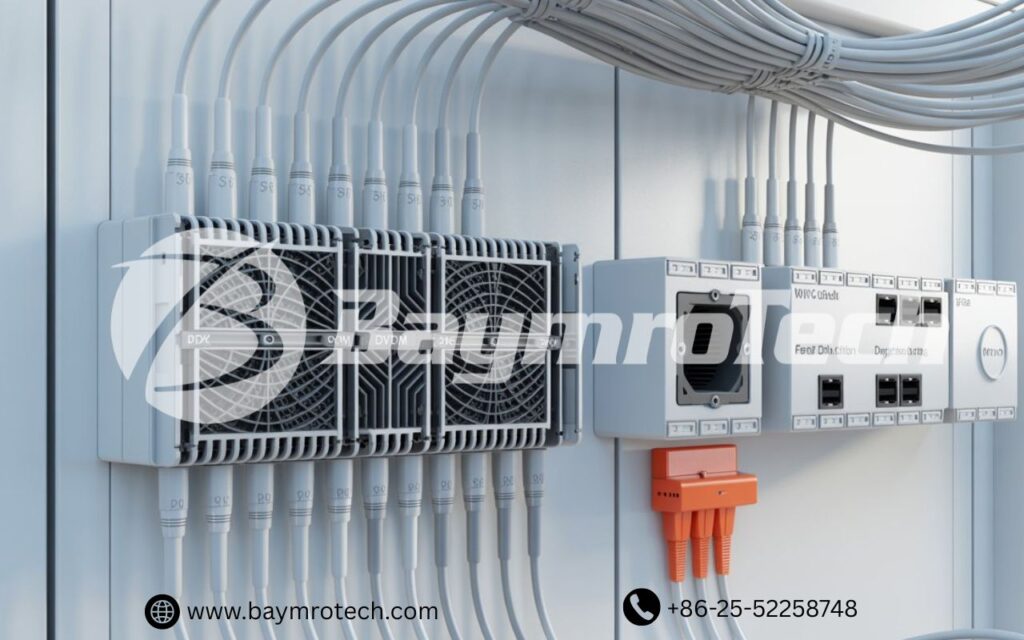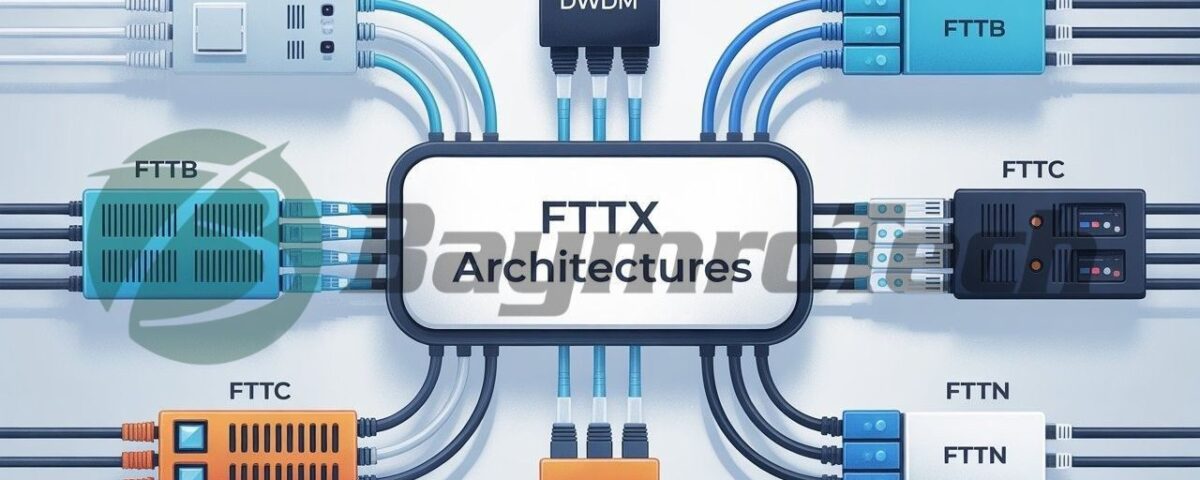In today’s fast-moving digital world, FTTx (Fiber to the x) technology is essential for delivering fast and reliable internet. Whether you’re an IT manager, a telecom contractor, or a business owner planning a network upgrade, understanding the basics of FTTx can help you make smarter buying decisions.
This guide breaks down what FTTx is, what components you’ll need, and how to choose the right products and vendors—so you can build a network that performs and scales.
What is FTTx?
To begin with, FTTx refers to various fiber-optic access configurations. These include:
- FTTH (Fiber to the Home)
- FTTB (Fiber to the Building)
- FTTC (Fiber to the Curb)
- FTTN (Fiber to the Node)
Each type determines how far the fiber runs from your provider to your building. For instance, FTTH brings fiber directly to your doorstep, while FTTC or FTTN may use copper for the last segment. As a result, FTTH provides the highest speed and reliability.
Key Components You’ll Need
Before starting your FTTx project, it’s important to know what components are involved.
1. DWDM Systems
DWDM (Dense Wavelength Division Multiplexing) allows multiple data signals to travel over the same fiber strand. Consequently, it dramatically increases bandwidth capacity.
Here’s a quick comparison to help you choose:
| Feature | DWDM Manufacturers | DWDM Vendors (Resellers) |
| Customization Options | High | Moderate |
| Bulk Pricing | Better | Often Higher |
| Integration Support | Included | Optional |
👉 Pro Tip: If your project requires specific configurations, buying directly from trusted DWDM manufacturers is often more cost-effective than using third-party vendors.
2. Keystone Jacks and Copper Components
Even in fiber-rich environments, copper connections are often needed—especially in FTTC or FTTN setups. In such cases, keystone jacks help you terminate copper Ethernet lines securely and professionally.
✔️ Choose Cat6A or Cat6 shielded jacks for best performance.
Planning Your FTTx Network: Step-by-Step
1. Conduct a Site Survey
First, evaluate your deployment environment. Are you working in a residential, commercial, or mixed-use area? Map out the number of users, distances from the central office, and available ducts or poles.
2. Choose the Right Architecture
Next, match the FTTx model to your needs. For example:
- Use FTTH for long-term investment and top speeds
- Select FTTB for apartment complexes or commercial buildings
- Go with FTTC/FTTN when budget or existing infrastructure limits full-fiber deployment


Making the Right Buying Decision
Choosing the correct hardware is just as critical as the planning phase. Therefore, look for suppliers that offer:
- Certified Products – ISO, CE, RoHS certified
- OEM/ODM Capabilities – Especially if you need custom solutions
- End-to-End Support – Including installation and maintenance
For example, at Baymro Technology, we provide a full range of components including:
- DWDM modules
- Fiber optic patch panels
- Fiber distribution boxes
- Keystone jacks
- Network cabinets and more
Final Thoughts
FTTx network planning doesn’t have to be overwhelming. With the right guidance, quality components, and a reliable supplier, you can build a future-ready network that meets your bandwidth needs today and tomorrow.
💡 Still unsure about what to order? Let us help. Contact Baymro Technology for a free consultation, custom pricing, and sample products.
📞 Get in Touch Today
- Email: jacky.cheung@baymrotech.com
- Phone: +86-25-52258748
- Let’s work together to keep your world connected.




